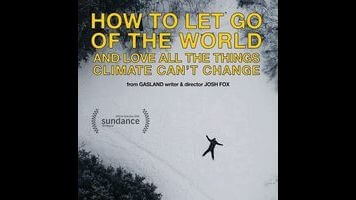Gasland director Josh Fox wants to teach us How To Let Go Of The World

Anyone who’s seen Josh Fox’s Oscar-nominated documentary Gasland and its 2013 sequel will be well prepared for the first 40 minutes of his new film: the awkwardly titled How To Let Go Of The World And Love All The Things Climate Can’t Change. As is his style, Fox starts small, opening with shots of himself dancing with joy over the news that the gas companies won’t be fracking in his general vicinity any time soon. But the euphoria ends when Fox starts thinking about the tree in his yard that’s dying because of an insect that’s seen its life cycle and eating capacity extended by global warming. And then Hurricane Sandy hits, and as Fox tours the wreckage, he cuts in interviews with climate experts who lay out convincing proof that we’re in for more severe weather, more floods, more famines… and most likely the end of human civilization, within the next couple of decades.
Just when he’s about to send his audience down a black hole of despair, Fox pivots. Rather than the outrage and depressing demonstrations of environmental devastation of the two Gaslands—and of How To Let Go’s first third—the movie takes the audience on a journey around the world, documenting people fighting on the front lines of climate change. Fox talks to citizen-journalists who’ve risked arrest to spread the news about what oil companies want to do along the Amazon. He meets with a Chinese artist who uses his country’s thick pollution as his primary theme. And he joins in with a flotilla of Pacific Islanders and Australian kayakers as they try to stop coal barges from embarking. Most meaningfully, Fox talks to an activist who suggests that when the dust settles from whatever apocalyptic disaster is inevitably arriving, the world may be a better place, with a long-overdue calibration of our value systems.






































![Rob Reiner's son booked for murder amid homicide investigation [Updated]](https://img.pastemagazine.com/wp-content/avuploads/2025/12/15131025/MixCollage-15-Dec-2025-01-10-PM-9121.jpg)

